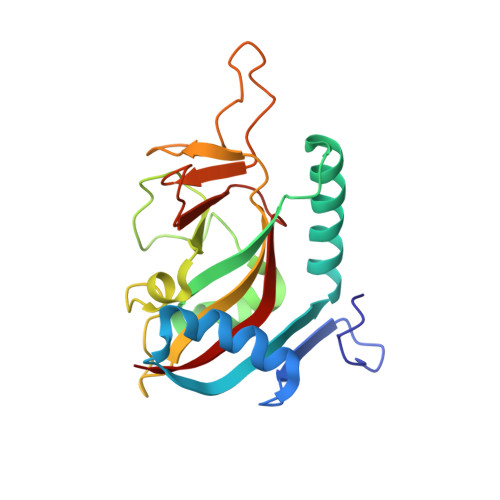Evaluation of 3- and 4-Phenoxybenzamides as Selective Inhibitors of the Mono-ADP-Ribosyltransferase PARP10.
Korn, P., Classen, A., Murthy, S., Guareschi, R., Maksimainen, M.M., Lippok, B.E., Galera-Prat, A., Sowa, S.T., Voigt, C., Rossetti, G., Lehtio, L., Bolm, C., Luscher, B.(2021) ChemistryOpen
- PubMed: 34145784
- DOI: https://doi.org/10.1002/open.202100087
- Primary Citation of Related Structures:
6RY4 - PubMed Abstract:
Intracellular ADP-ribosyltransferases catalyze mono- and poly-ADP-ribosylation and affect a broad range of biological processes. The mono-ADP-ribosyltransferase PARP10 is involved in signaling and DNA repair. Previous studies identified OUL35 as a selective, cell permeable inhibitor of PARP10. We have further explored the chemical space of OUL35 by synthesizing and investigating structurally related analogs. Key synthetic steps were metal-catalyzed cross-couplings and functional group modifications. We identified 4-(4-cyanophenoxy)benzamide and 3-(4-carbamoylphenoxy)benzamide as PARP10 inhibitors with distinct selectivities. Both compounds were cell permeable and interfered with PARP10 toxicity. Moreover, both revealed some inhibition of PARP2 but not PARP1, unlike clinically used PARP inhibitors, which typically inhibit both enzymes. Using crystallography and molecular modeling the binding of the compounds to different ADP-ribosyltransferases was explored regarding selectivity. Together, these studies define additional compounds that interfere with PARP10 function and thus expand our repertoire of inhibitors to further optimize selectivity and potency.
- Institute of Biochemistry and Molecular Biology, Medical Faculty, RWTH Aachen University, Pauwelsstrasse 30, 52074, Aachen, Germany.
Organizational Affiliation:


















